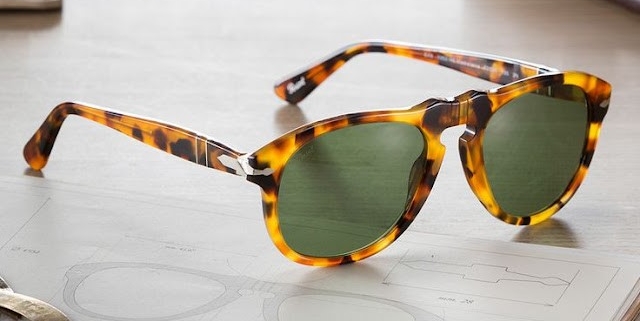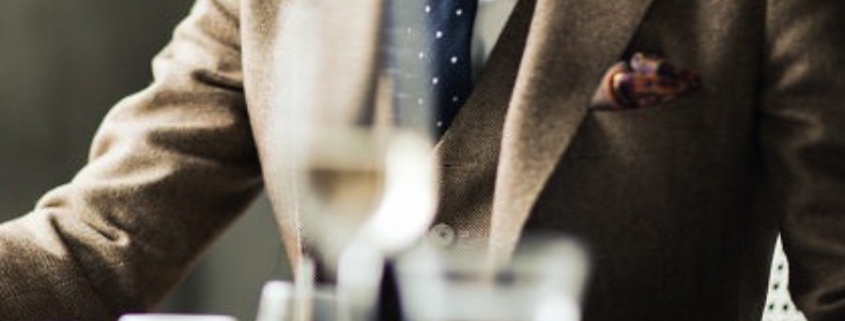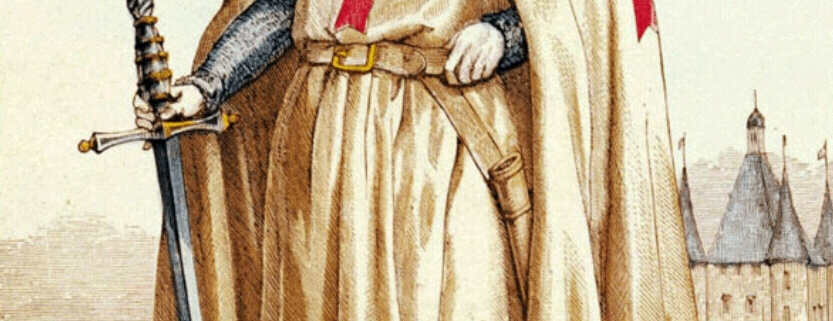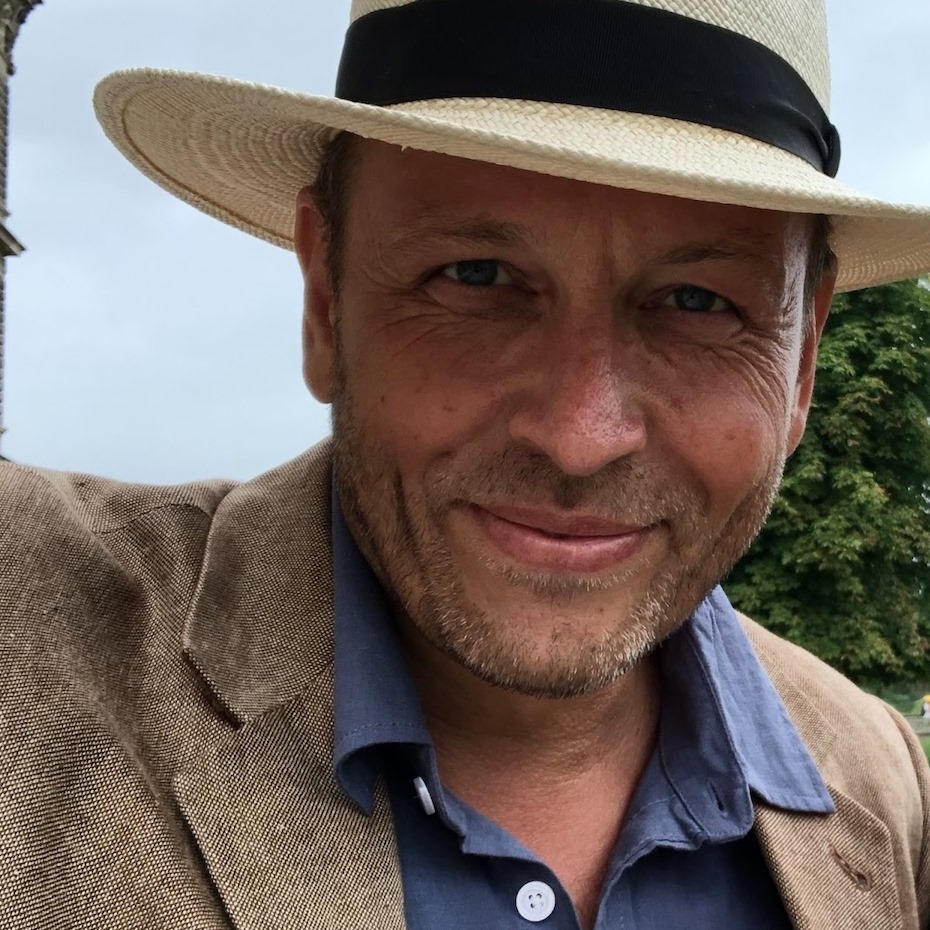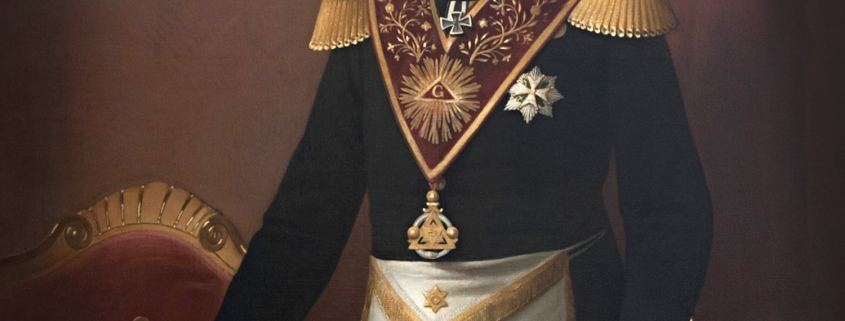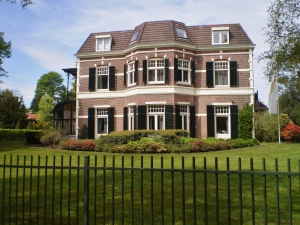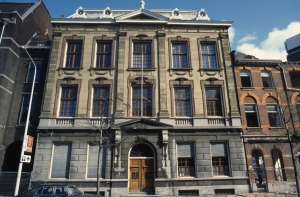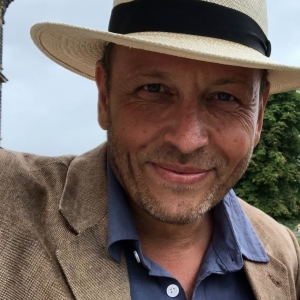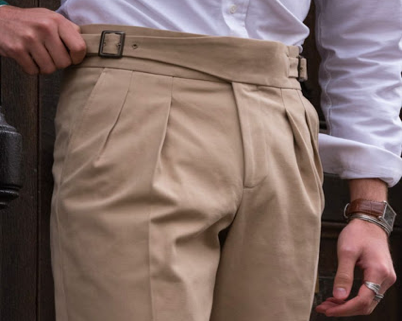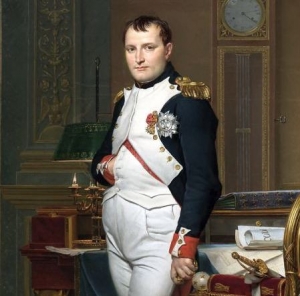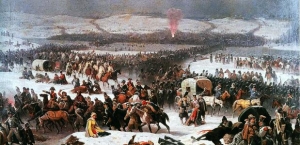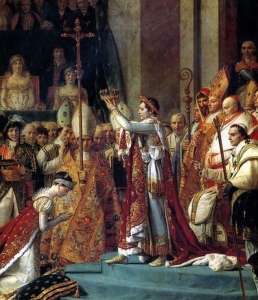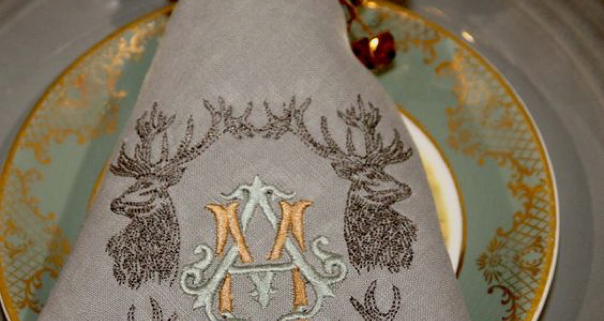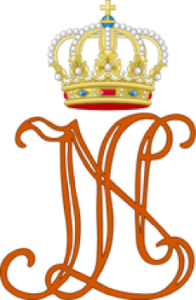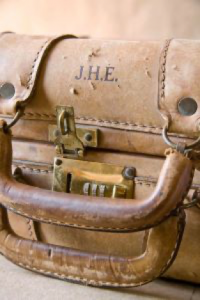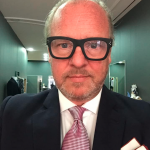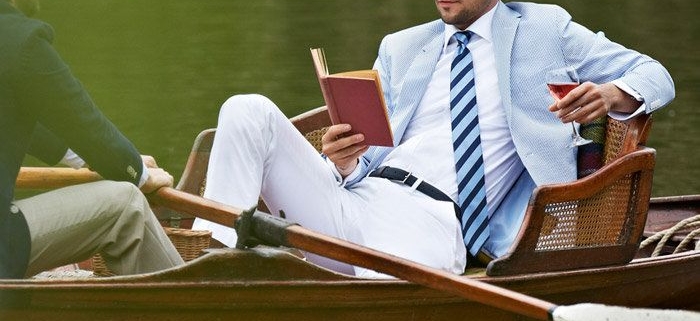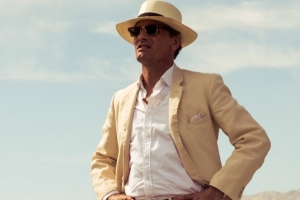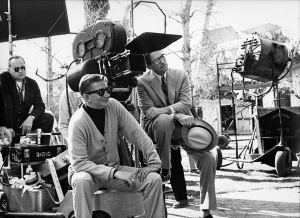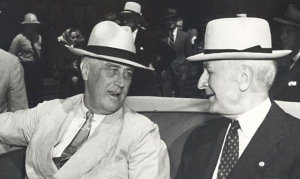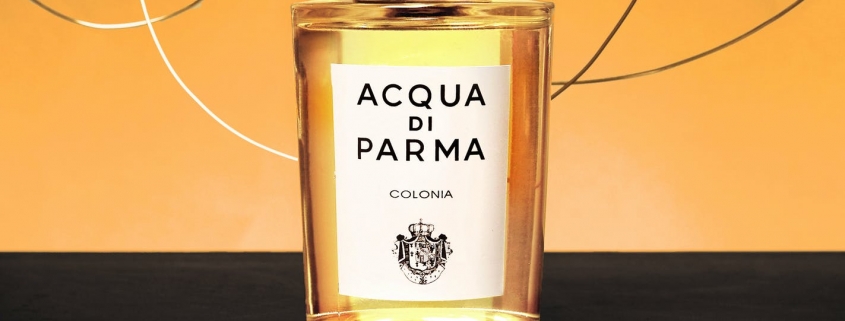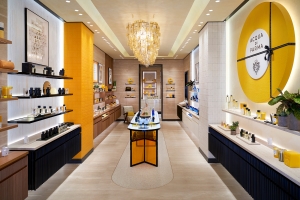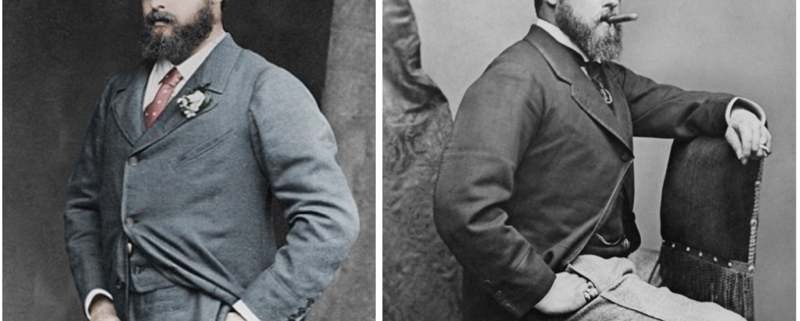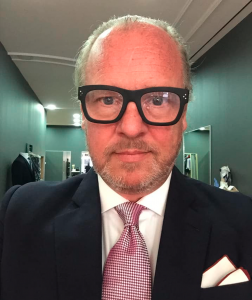Messages
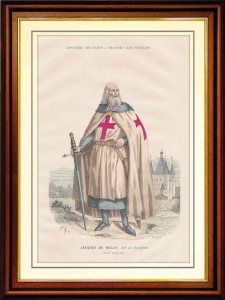
In 597 B.C. Nebuchadnezzar II, king of Babylon, conquered Israel. After ten years of dealing with rebellion from the conquered people, he decided to destroy Jerusalem and King Solomon's Temple, stole all the artefacts (except the Ark of the Covenant, which has never been found to this day) and took them to Babylon, along with a large number of captives. About 50 years later, Cyrus the Persian defeated Nebuchadnezzar and finally freed the Israelites and allowed them to return to Jerusalem, where Zerubbabel built a second temple on the site of King Solomon's temple in 516 BC. This second temple stood until 20 B.C. when Herod the Great dismantled the second temple and built a magnificent temple in an attempt to glorify Jerusalem and his name. This temple was destroyed by the Roman emperor Tital in the year 70.
The site of the temple later became the third holiest place in the Islamic faith, when the Prophet Mohammed ascended to heaven by climbing a ladder of light from a sacred stone that was once part of King Solomon's temple. In 691 Calif Abdul Malik began building the mosque of Sakhra (Dome of the Rock) next to the site of the temple, which was completed by his son, it was destroyed and rebuilt several times until the last Al Aqsa mosque was completed in 1099.
Establishment of the Order of the Temple.
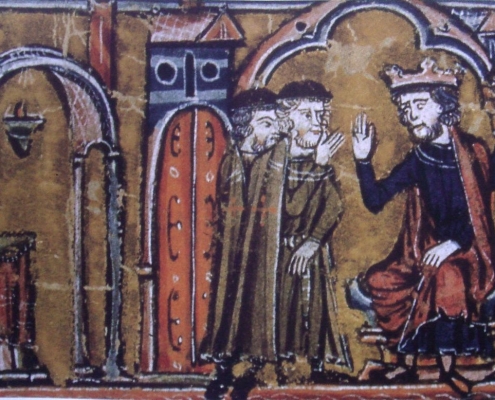
The successes of the crusaders had brought pilgrims from all over Christendom to the Holy Land, but the obstacles the pilgrims had to overcome were numerous. There was a lack of roads and means of transport, the routes were threatened by robbers and it was almost a fact of life that one was cheated by the innkeepers and traders one encountered. To provide some protection for these otherwise unguarded pilgrims, Hugues de Payens and seven other knights founded the Order of the Temple. The king of Jerusalem, Baudouin II, granted them a residence near the royal palace at the captured Al Aqsa mosque, on the site traditionally believed to be that of the Temple of Solomon, also called Temple Mount. The Knights came to be known as the "Knights of the Temple" and for the next ten years, in addition to their regular duties, they excavated the ruins of Solomon's Temple beneath their quarters. In 1867, a team of Royal Engineers, led by Lieutenant Charles Warren and funded by the Palestine Exploration Fund, discovered a series of tunnels under Jerusalem and the Temple Mount, some directly under the Templars' headquarters. Several small artefacts were found indicating that Templars had used some of the tunnels, although it is unclear exactly who dug them first. Some of the ruins Warren discovered date back centuries earlier.
Hugues de Payens toured several European countries between 1124-1128, he received official approvals from the Catholic Church at the Council of Troyes in France in 1124 and he visited his comrade Henri Saint Clair, first Earl of Roslin at his home in Roslin, Scotland around 1126-28, during this visit he was granted land by King David I of Scotland to build the first Templar Preceptory outside the Holy Land, at Balantrodoch near Edinburgh, now called Temple Midlothian. Around this time Hugues de Payens also founded a Preceptory in London, England. Hugues de Payens' visit to Scotland establishes Rosslyn's first connection with the Templars.
As for the excavation under the Temple Mount, no evidence has been recorded, but it seems that the Templars found something.
In 1139 (just 21 years after the founding of the order), Pope Innocent II issued a papal bull exempting the Order from obedience to local laws. This ruling meant that the Templars were free to cross all borders, did not have to pay taxes and were exempt from all authority except that of the Holy See itself. With its settlements and generous financial resources, the Order grew into the largest and richest organisation of its time. Templars often fought in the vanguard in important battles during the Crusades. The heavily armoured and experienced knights on their war horses were almost always the spearhead of the attack to break through the enemy's lines.
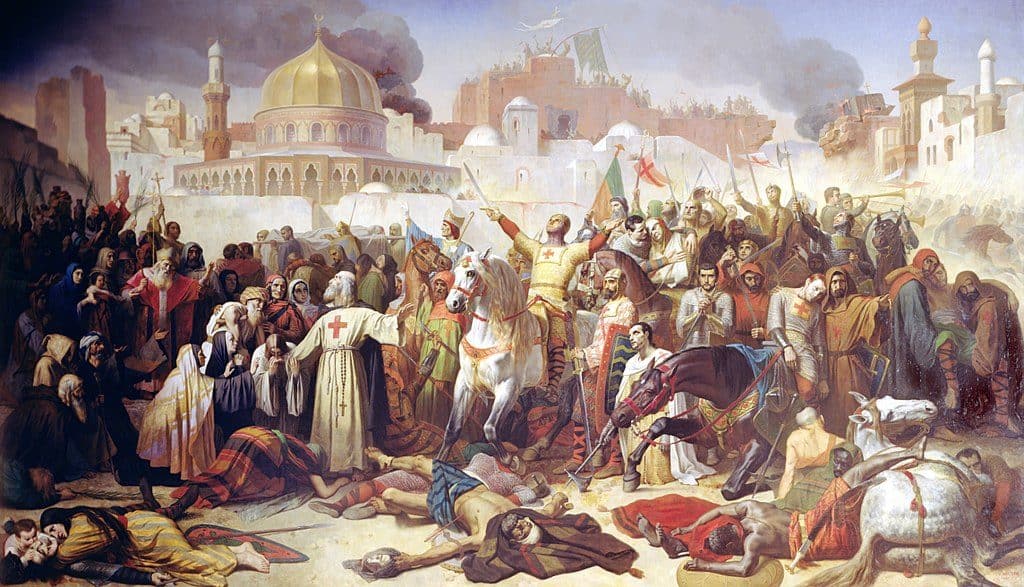
Pilgrims deposited their valuables with a local minister before leaving, received a document with the value of their deposit and then used that document on arrival in the Holy Land to collect their money. The bank cheque was born.
This innovative scheme was an early form of banking and was possibly the first formal system to support the use of cheques.
It improved the safety of pilgrims by making them less attractive to thieves and contributed significantly to the Order's coffers.
Based on this mix of donations and business transactions, the Order has established financial networks throughout Christendom.
- They acquired large tracts of land, both in Europe and the Middle East
- They bought and managed farms and vineyards
- They built churches and castles
- They were involved in production, import and export
- They had their own fleet of ships
- They owned the whole island of Cyprus for a year in 1191
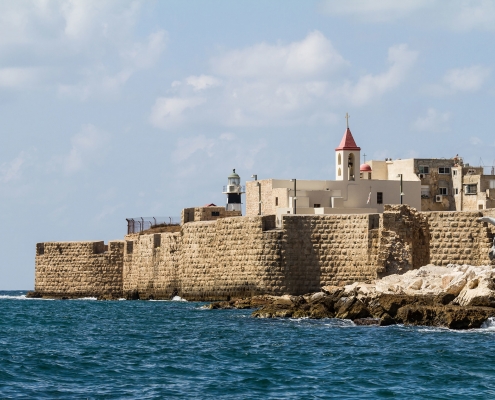
Jacques de Molay was burned at the stake.
In 1307 he suddenly arrested all Templars in France, and persuaded all countries except Scotland and Portugal to follow suit.
The wealth, independence, pride and secrecy of the Order proved to rob them of all influential friends, and the French king managed to secure their conviction for heresy. However, Phillip never succeeded in acquiring the wealth of the Order, as someone tipped off the knights and on the day of the mass arrests, the Templar fleet set sail from La Rochelle in France, their destination a mystery - although many at the time believed they were sailing to Scotland. In France, many Knights of the Order were tortured to force confessions, and in this way much of the scandalous legend was added to the Order's story. Many resisted the force of the rack and were burned at the stake as heretics. The Grand Master, Jacques de Molay, was the last to be put to death in Paris in 1314.

"It is only right that at such a solemn moment and when my life has so little time to run, I should reveal the deception that has been practised and stand up for the truth. Hear me! Before heaven and earth and all of you before my witnesses, I confess. I confess that I am indeed guilty of the greatest shame, but the shame is that I have lied. I have lied by admitting the disgusting charges against my Order. I declare, and I must declare, that the Order is innocent. Its purity and holiness have never been defiled. In truth, I would have testified otherwise, but I did so for fear of terrible torture. Other knights who withdrew their confessions were led to the stake, I know. Yet the thought of dying is not so horrible that I would now keep my confession of gross crimes that were never committed. Life is offered to me, but at the price of faithlessness. At such a price, life is not worth living. If life can only be bought by piling up lie upon lie, I do not grieve to lose it."
Modern historians reject the trial of the Knights Templar as wholly unjust and acquit the Order of the charges against it. The Catholic Church has long held that the Order was innocent of any wrongdoing and a recently found document 'The Chinon Parchment' reveals that Pope Clement V had pardoned Jacques de Molay in 1314, just before his death. The surviving members of the Order merged with other orders or went into hiding. In Portugal King Denis refused the Pope's order and renamed the Order 'The Order of Christ' instead. This Order would continue in history into the 20th century and had a direct influence on European exploration and expansion for more than 400 years.
Rosslyn Chapel and the beginnings of Freemasonry.
Legends arose that some knights fled to Scotland, where an excommunicated King Robert the Bruce was engaged in a battle against the English and it seems logical and likely that the Bruce would have welcomed the Templars. The Templars fought for the Scots at Bannockburn in 1314 and in return received refuge, land and titles from a grateful king. Later this was called The Scotch Guard.
There is also a theory that the sailors of the Order managed to use their skills to navigate across the Atlantic Ocean where they discovered North America. In 1312, the Order of the Knights Templar was dissolved by the Council of Vienne and their remaining property was transferred to the Knights of St. John. In the 1440s (130 years after the Templars' dissolution) Sir William Saint Clair, Jarl of Orkney was the most powerful man in Scotland. He was a direct descendant of William de Saint Clair, the last Templar Grand Master of Scotland, who died with the heart of Robert the Bruce (as part of James Douglas, Lord of Douglas expedition) on a final crusade to Jerusalem.
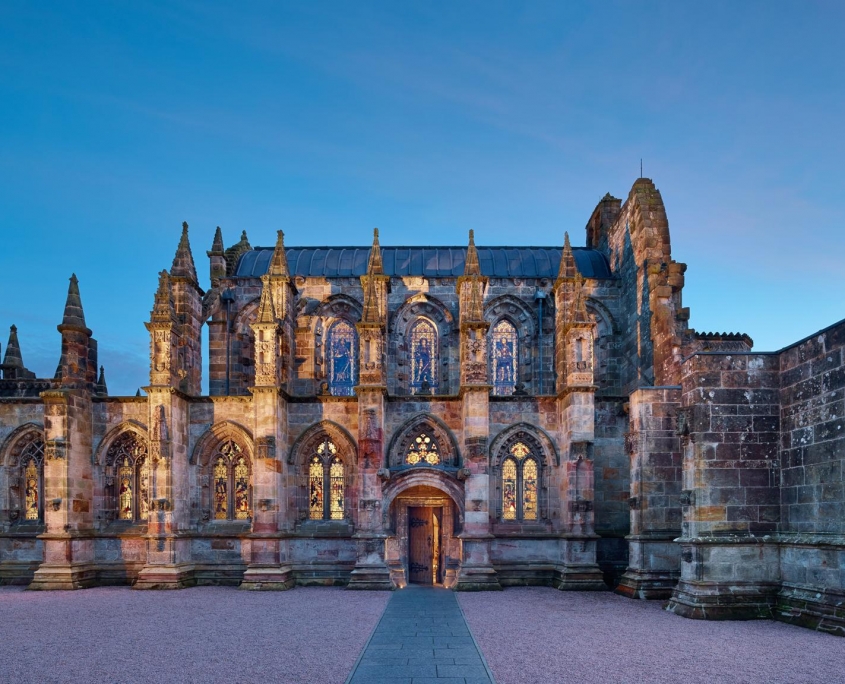
He sought and received a charter from the Church in Rome to build a collegiate chapel in 1446. His most likely reasons for wanting this temple would be to establish a seat of spiritual authority to emulate King James II and to house artefacts brought to Scotland by the Knights Templar in 1126 (and perhaps after the dissolution of the order) and inherited by the Saint Clair family.
Rosslyn Chapel connects the Jewish Temple to the Masonic Temple via the Knights Templar. Historians and researchers have now shown that Rosslyn Chapel was built in the same style as the Herodian architecture of Jerusalem and that it is an exact replica of the ground plan of the temple of Herod the King. The layout of Herod's temple was unknown to archaeologists until the mid-nineteenth century, almost four hundred years after the chapel was built. Sir William Saint Clair brought Masons (in those days the word mason meant builder and included stone, wood and metal masons) from all over Scotland to his chapel.
To accommodate them he built the town of Roslin near his castle and the site of the chapel, and on 20 September 1456 construction began. Rosslyn Chapel contains the oldest document showing a modern First Degree ceremony performed by a Templar. On the lower frame of the window in the south-west corner of the chapel is carving, carved between 1440 and 1450 of the First Degree. There are many Templar symbols and images of Templars carved in the chapel. When King James II died in 1460, his son, James III, came to the throne and he thought Sir William posed a great threat to the Crown of Scotland, so he stripped Sir William of Orkney (in 1470). Sir William abdicated as Earl of Caithness in favour of his son in 1476 and he died in 1484.
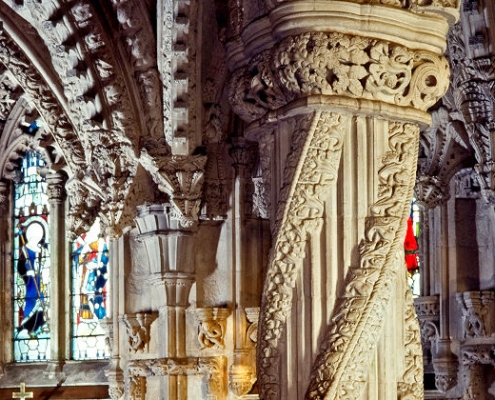
In 1483 (27 years after the construction of Rosslyn Chapel began) the first Masonic documents are found stating that the Burgh of Aberdeen is involved in the settlement of a dispute between six 'Masownys of the Lurge'.
Freemasonry begins to spread as Lodges initiate candidates and give them the 'Master's Word'.
It seems that the Freemasons who built Rosslyn Chapel found something of great value in the ceremonies and teachings they learned at Rosslyn and when they returned home, they took this ritual and sense of brotherhood with them.
Scotland would remain the cradle of Freemasonry for the next 100 years.
In conclusion...should we consider the roots of Freemasonry as coming from Megalithic times, King Solomon, Athelstan, the Templars, medieval stonemasons, Schaw, charities, the Invisible College or the Rosicrucians? Moreover, do we think that the roots of modern Freemasonry lie more in Scotland or England or perhaps France?
We will never know for sure and can only speculate about the gaps in history. Whatever course Freemasonry took, it inspired millions of people in many countries for more than three centuries and attracted famous personalities from Europe, the United States of America and other continents. If Freemasonry adapts to the Zeitgeist and manifests itself as a time-honoured Fraternity in which self-knowledge, respect and work on the Rough Stone are the primary goals, it will undoubtedly continue to do so for several centuries to come.
Thierry Stravers is co-owner of Masonic Store.
He likes to combine his passion for style and elegance with his Masonic activities.
Thierry is the owner of Trenicaa marketing agency and is a board member of Loge Enlightenment No.313 O: Hoofddorp.
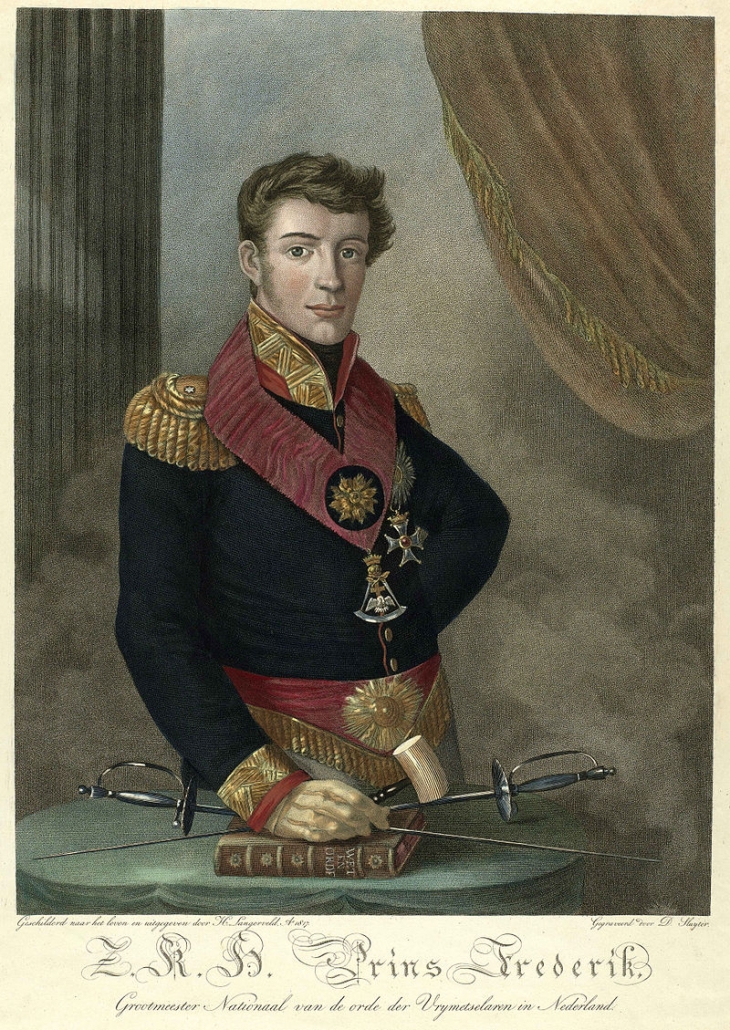
Frederik, Prince of the Netherlands, was born on 28 February 1797, the second son of Prince William Frederik, later King William I. Born and raised in Berlin, he was for some years an active officer in Prussian service, and in 1813 entered the Netherlands. He married Louisa Augusta Amelia, daughter of Frederick William III, King of Prussia. Frederick became commander of the army corps during the Belgian revolt in 1830 and in 1840 appointed Field Marshal of the army.
In 1816 he was accepted as a Freemason in a Berlin lodge of the German Grand Lodge "Zu den Drei Weltkugeln" and in the same year he was appointed as Grand Master National of the Grand East of the Netherlands and for the Chapter of the High Degrees. In 1819 he declared that he did not want to work in the High Degrees any more, because he detested the Christian character and thought that this would undermine the character of
Freemasonry as a sanctuary for all believers. In addition, this was partly in connection with the establishment of the Department of the Master Degree, which he had envisaged. In 1835, however, the prince was again elected Grand Master National for all Dutch obediences.
In 1856 he donated the The Order In 1856 he donated the building on the Fluwelen Burgwal in The Hague, which remained in use as an Order and Lodge building until 1993. In 1866, during the celebration of his 50th anniversary of Freemasonry, Frederick donated the famous library of Georg Kloss, which he had purchased, to the Order and took the initiative to found the Louisa Foundation.
In his time he was a highly respected and beloved member of the House of Orange. From the moment his father King William I was proclaimed sovereign of the Netherlands in 1813 until his death in 1881, he played an important role as advisor to Kings William I (his father), William II (his brother) and William III (his nephew). He was also very active in society. For instance, the Prince was for 65 years Grand Master of the Order of Freemasons of the Metropolitan Netherlands.
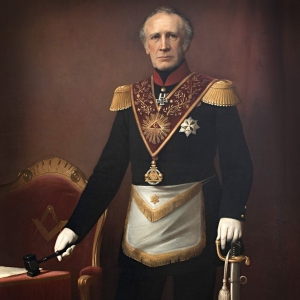
The reason he was not born in the Netherlands but in Berlin was that his family, led by his grandfather Stadtholder William V, had had to flee the country two years earlier because of the French invasion. At that time, the chance that the Oranges would ever return to the Netherlands as a stadholder family seemed very small. Prince Frederik therefore grew up mainly in Prussia and other German principalities and received a corresponding (partly military) Prussian upbringing. It was only after Napoleon's failed campaign in Russia that the tide began to turn in the European balance of power and there was some prospect of a return to the long-lost fatherland.
In 1813, Willem Frederik was proclaimed Sovereign Prince of the Netherlands after he landed on the coast of Scheveningen on 30 November of that year. Square 1813 in Willemspark and the monument to independence unveiled by Prince Frederik in 1869 in the middle of the square are reminders of this event.
Prince Frederik first set foot on Dutch soil in December 1813 and shortly afterwards began studying at Leiden University. From 1815, when William I had become King of the United Kingdom of the Netherlands, the Prince took up public functions: in 1815 he became a member of the Council of State, in 1816 Grand Master of the Order of Freemasons and in 1817 Grand Master of Artillery. The reason that Prince Frederik became Grand Master of the Freemasons was political: there was some fear that the Freemasons would want to block the policy of unification of the Northern and Southern Netherlands. This was especially true for the southern Lodges where there were many opponents of the United Kingdom and Bonapartists and who were still connected to the French Grand-East. Therefore, royal supervision was considered necessary. For Freemasonry, this had the advantage of a direct link to the royal family. With this aim in mind, a court lodge called L'Union Frédérique was founded in 1816, which in many respects can be seen as a forerunner of L'Union Frédéric, founded in 1914.
Although his entrance into Freemasonry had a political background, the prince took his task as Grand Master seriously.
Frederik soon felt at home in the brotherhood and soon began to involve himself in all kinds of organisational aspects of Freemasonry.
An important Masonic legacy of the prince concerns the still existing Divisions of the Master Degree, which was to form an alternative to the higher degrees.
For Prince Frederik personally, Freemasonry was a school of learning in many respects: in addition to the "usual" Masonic education, he learned how to manage an unruly organisation with very diverse people and visions. Above all, Freemasonry brought him into contact with many people (ordinary citizens) whom he would otherwise never have met.
A second important legacy of the prince concerns his gift of the Order building on the Fluwelen Burgwal. In 1847 he donated this building to the Order and until the beginning of the nineties of the 20th century the executive committee and the lodges in The Hague were housed here. Condition for this gift was that the three existing lodges in The Hague Loge L'Union RoyaleEendragt maakt Magt and L'Union Fréderique would merge into one Lodge. In 1847, he offered the Hague Masonic Lodges L'Union Royale (founded 1757), Eendragt maakt Magt(1795) and L' Union Frédéric (1816) the "use and exploitation" of the building. A temple was built in the garden. In 1856, Prince Frederik donated the lodge building to the Masonic Order on the occasion of its 100th anniversary.
In 1825 Prince Frederick married the Prussian Princess Louise, who was also his niece (at this time, marriages between nephews and nieces were especially common in royal and noble families, as this was seen as an excellent way to establish and confirm political alliances). From this marriage two daughters and two sons were born. The eldest daughter Louise married King Charles XV of Sweden and Norway and thus became Queen of these countries. The present kings of Belgium and Norway and the Queen of Denmark descend from her and thus from Prince Frederick in a direct line. The Prince's two sons both died in childhood. During the winter, the Prince's family lived in a city palace on Korte Voorhout, which stood where the Ministry of Finance now stands and was destroyed in the bombing of Bezuidenhout in 1945. In the summer they lived in Huize de Pauw, the present town hall of Wassenaar.
Furthermore, the Prince owned considerable pieces of land in and around The Hague and he owned land in present-day Germany and Poland.
Unlike his brother King Willem II, he managed his capital skilfully and he died in 1881 as a very wealthy man.
The prince died on 08 September 1881 after a Grand Mastery of more than 65 years.
Thierry Stravers is co-owner of Masonic Store.
He likes to combine his passion for style and elegance with his Masonic activities.
Thierry is the owner of Trenicaa marketing agency and is a board member of Loge Enlightenment No.313 O: Hoofddorp.
5 May marks the 200th anniversary of the death of Napoleon Bonaparte. He is still the most famous ruler France has ever had. Despite his contradictory nature, he is undoubtedly one of the most important personalities in history. Many generations of French people have been filled with admiration, pride and unremitting interest in studying the life of the "little corporal" who became emperor.
Napoleon Bonaparte was born in 1769 on the island of Corsica. He became a successful and popular military leader and came to power in France in 1799. This was not enough for the ambitious Napoleon: he later crowned himself emperor.
With his armies, he conquered large parts of Europe in those years. However, the campaign in Russia in 1812 ended in defeat. Napoleon was exiled to Elba. But he escaped and within 100 days he was back in power in France. In 1815 he was finally defeated at Waterloo.
The English bring him to the remote island of Saint Helena, where he finally dies in 1821, at the age of 51.
Was Napoleon a Freemason?
Historians have no document that could confirm this, but there are some undeniable facts that show Napoleon's strong affiliation with Freemasonry. It was thanks to Napoleon that Freemasonry spread in Europe. He changed Freemasonry from a secret society, as it was until then, to almost an official state religion and united all French Lodges in the Grand Orient de France. On his native island of Corsica, Bonaparte grew up surrounded by Freemasons. His father and all three of his brothers were Freemasons, so there was undoubtedly a lot of talk about Freemasonry.
- The youngest brother, Jerome Bonaparte (1784-1860) was initiated into Freemasonry at the age of 17 in the Mir Lodge in the east of Toulon.
His Masonic career developed rapidly. A year later, in 1801, he became Grand Master of the Grand Lodge of Westphalia, and in 1807 Napoleon made him King. - The elder brother, Joseph Bonaparte (1768-1844), was initiated into the Loge La Parfaite Sincérité (The Perfect Sincerity) in the east of Marseille. In 1804 he became Grand Master of the Grand Orient de France and King of Naples, then King of Spain.
- Finally, Louis Bonaparte (1778-1846), father of the future Napoleon III, served as Deputy Grand Master from 1803 to 1806, before being succeeded by Jean-Jacques Regis Cambasseres.
- Napoleon's wife, Empress Josephine de Beauharnais (1763-1814), was initiated into a women's lodge in Strasbourg and held the position of Grand Master for some time.
- Eugène de Beauharnais, Josephine's only son from her first marriage, at the age of 24, who had been given the title of Viceroy of Italy by her stepfather, became the founder of the Grand Orient of Italy and the High Council of Italy.
The support of Freemasonry in Europe by Napoleon, caused an unprecedented stir. Many soldiers, politicians, nobility and citizens wanted to become members of Freemasonry. Twenty-two of Napoleon's thirty Marshals, five of the six members of the Imperial Military Council and six of the nine government ministers were Freemasons. The reign of Bonaparte can be called the golden age of Freemasonry. In the 18 years that he was in power, the number of Masonic lodges in France increased from 300 to 1220, of which a large part were military lodges. Napoleon saw in Freemasonry a powerful tool to unite the army, which was very useful for his European ambitions.
During his military operations in Europe, the International Brotherhood was an ideal instrument. Freemasonry, however, responded to the Emperor with reciprocity. Busts of the emperor were installed in many Masonic temples and any criticism of his rule was considered provocation.
In 1801, the Loge Bonaparte was founded in Paris with the main task of glorifying the emperor's name. The lodge successfully survived exile and Napoleon's death and was not closed until 1871. It withstood the reactionary years thanks to the fact that it was carefully renamed Moderation Lodge.
It was the military officers, subordinates of Bonaparte, who took part in the Egyptian expedition that brought Freemasonry to the banks of the Nile. General Kleber founded Loge Isis in Cairo, also founded by Napoleon.
But the question remains. Although Napoleon made Freemasonry a part of his government policy, was he an active Mason?
If he wanted to become a member, he would immediately receive the highest and most honourable title in the Order.
If we know the character of Napoleon, the answer to this question is quite clear: it was not enough that he was "first among equals", he had to be "above" equality. The Bonaparte family came from an old Florentine aristocratic family. Napoleon had every right to add the title of Count to his family name, but he never took advantage of this opportunity.
But neither did he want to be called a friar.
For the same reason Napoleon once renounced the title of Marshal - it was enough for him that he was "de facto" commander-in-chief of the French army. Ranks and titles were in no way attractive to him. Napoleon was only interested in absolute power.
After he was crowned Emperor of France, Napoleon got his ambition.
He called the imperial throne, "a piece of wood" and sitting at the dinner table with the nobility of Europe, he would sometimes remark,
"When I had the honor of being a junior lieutenant..." .
L'empereur had a nose for propaganda. When it was necessary to demonstrate the wealth and power of his empire, he was not stingy. His palaces were richly decorated with gold and the court was the most refined in Europe.
After he became Emperor, Napoleon remained closely involved in Masonic affairs.
At the execution site of King Louis XVI, he ordered an obelisk to be erected with a Masonic symbol, a five-pointed star. A bee, a Masonic symbol, was used in the creation of his personal imperial coat of arms. The bee is a very old symbol. In ancient Egypt, it accompanied the goddess Isis and had many meanings. For Napoleon, the bee meant a willingness to sacrifice for the country and the ability to rebirth.
Shortly after Napoleon came to power, on 22 June 1799, a nine-article memorandum was signed between the two largest French Grand Lodges, laying down specific
rules. In particular, the Honorable Master was stripped of his exclusive privileges. A system for the election of officials was made compulsory for all lodges. Only a few Lodges in the Scottish Rite refused to join the Memorandum.
Thus, the fragmented French Freemasonry became a unified and homogeneous system, fully supported by Napoleon. Soon the 'Regulator of Freemasonry' was published - a set of rules and rituals for the lodges of Le Grand Orient de France.
The Lodges under the Scottish Rite also made appropriate changes to their rules, but this took three years. As a result, the rituals were still not identical, but there was one Supreme Council of the 33rd degree. The decisions of this council were binding. The Emperor could influence every decision, as the High Council was meanwhile headed by his elder brother Joseph, who had become the Grand Master.
The 'Regulator of Freemasonry', which unified the activities of Freemasons, became a document that organically continued the reforms of Napoleon, along with the Constitution, the Civil Code, the system of universal education, a single award system of the state (the Order of the Legion of Honour), etc.
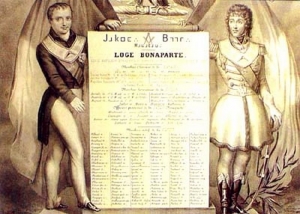
An engraving with a list of members of Loge Bonaparte. On the left is Bonaparte and on the right is Jean-Baptiste Willermose (1730-1824), who designed a system of High Degrees for Freemasonry in France and Germany.
Following France, the Freemasons of other European countries began to combine their rituals into one system. Marshal of the realm, Freemason Jean-Baptiste Jules Bernadotte, who became crown prince of Sweden, reformed the Swedish rite. The system of 12 Masonic degrees still exists.
Friedrich Ludwig Schröder, Grand Master of the Provincial Grand Lodge of Hamburg, inspired by the ancient rites of the Knights Templar, developed his Rite, limited to three symbolic degrees. Today it is practised in some lodges in Germany, Hungary, Austria and Switzerland.
In Spain, the Grand Master Count François Joseph Paul de Grass also established a Masonic hierarchy under the leadership of the Supreme Council.
In 1806, to celebrate his triumph at Austerlitz, Napoleon decided to build the Arc de Triomphe. A team of builders and architects, composed entirely of Freemasons, was set up to carry out the project. Brother Jean-Baptiste Nomper de Champagny proposed the concept and chose the building site. The original plan was designed by the architect Charles-Louis Balzac (Loge Le Grand Sphinx, Paris) and the architect Jean-Francois Chalgren (Loge L'etoile Polaire, Paris).
Freemasons created the relief on the arch. The sculptors François Rueud (north side, composition "Marseillaise") and Jean-Pierre Corto (south side, composition "Le monde viennoise"). The official government architect, Maison Pierre Fontaine, supervised the construction.
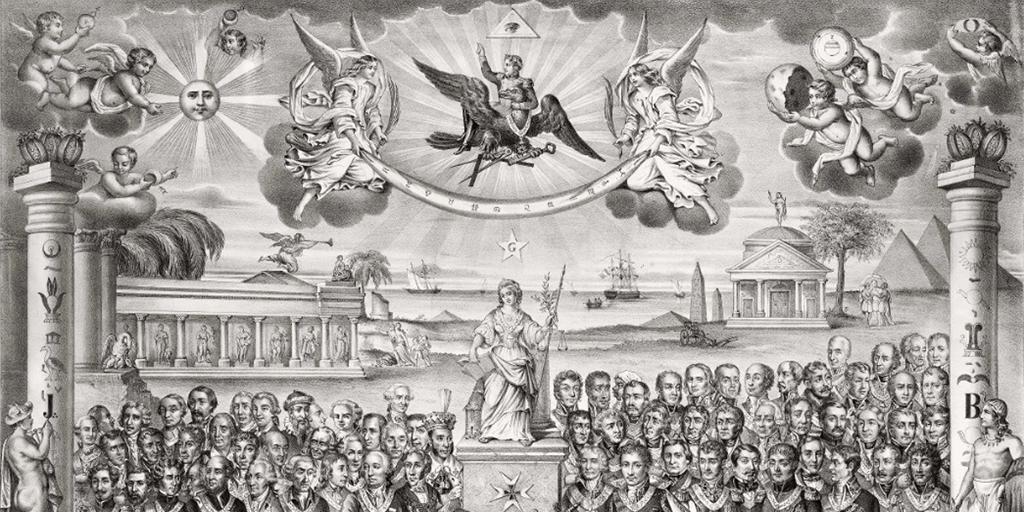
On the engraving from 1860, under the shadow of the emperor above whom The Eye of the Providence shines, are 61 historical figures from his time. On the left are Désé, Cambassaire, Kleber and the commanders Davaux, Lannes, Murat, Lasalle, Mathieu Dumas, among others. On the right: Washington, Frederick the Great, Alessandro Volta, Diderot, Lased, Lafayette, Parmatier, Helvetia.
Following the military leaders, Napoleonic Freemasonry was enthusiastically received by the most prominent figures of science and culture in France:
- Pierre Simon de Laplace - mathematician, physicist and astronomer, one of the creators of probability and differential equations,
- Charles Louis Cadet de Gassicourt - chemist, pharmacist and writer, founder of one of the first scientific journals, Le Bulletin Pharmalogique,
- Artist Pierre Prudon (Loge Charity, Bonn),
- Artist Francois Gérard (Loge Le Grand Sphinx, Paris),
- Portrait painter Jean-Baptiste Isabé (Loge Saint Napoleon, Paris),
- Actor Francois-Joseph Talma, reformer of theatrical art (Loge Union, Paris),
- Academician Pierre Jean Georges Cabanie, physiologist and philosopher (Loge Les Neuf Sœurs, Paris),
- Academician Joseph Lacanal, professor of philosophy, member of the monastery, organiser of the education system in France (Loge Le Point Idéal, Paris),
- writer, publicist and politician Henri-Benjamin Constant, the most important representatives of French Romanticism in literature,
- sculptor Claude Claudion (Les Amis Fidèles, Paris),
- Alexander Bognard, professor of natural sciences, chemist, pharmacist, geologist, zoologist, botanist and palaeontologist (Loge Saint-Jean-du-Contrat, Paris),
- architect Pierre Fontaine,
- composer André Gretry, creator of the French comic opera,
- Composer Luigi Cherubini, creator of the genre "opera salvage" (Loge Saint Jean de Palestine, Paris).
The legacy of Napoleon.
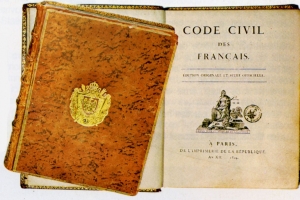
When you get into your car now, you drive on the right side of the road. Thanks to Napoleon. In earlier times, knights on horseback rode on the left, so that they could more easily wield their sword or lance with their right hand. The rich French bourgeoisie stuck to the left. The common people usually walked on the right. But since the French Revolution in 1789, everyone was officially equal. Therefore, Napoleon decreed that right-handedness became the norm. It was also more convenient with the carriages and carts in those days. Countries which he did not conquer, such as Great Britain, continued to drive on the left.
Thanks to the French, we also have street names with even and odd house numbers. This system was first used in Paris, and later in all conquered regions. We also owe paved roads to Napoleon, who wanted straight lines between cities. Handy for moving his troops, of course. In France, these roads were called the Route Nationale; in Europe they are called Napoleon roads. The Amsterdamsestraatweg in Utrecht is an example of this. It was built by order of Napoleon in 1812, as part of the Route Impériale between Paris and Amsterdam.
A kilo of potatoes, a litre of milk, and, let's say, a metre of beer. Standard measures and measurements. Napoleon introduced the metric system in 1799. Before that, all kinds of different measures were used in Europe, such as inches, ells and feet. Napoleon found this inconvenient and confusing in his empire. And even if you don't realise it, you probably have to deal with it every day.
According to Napoleon himself, his most important legacy: the Code Napoleon, or the Code Civil. The French Civil Code, which laid down the principles of 'liberty, equality and fraternity', but also the separation of church and state, served as inspiration for law books in many countries. Napoleon eventually made his code compulsory in the Netherlands as well. By the way, equal rights did not apply to women in those Napoleonic days.
Abattoir, desk, purse, all words that came into vogue during the French era here in the Netherlands. From 1810 to 1813, French was even an official language here, alongside Dutch. It was also compulsory in education. Napoleon also carried out reforms there. Teachers became obliged to teach in class. Parents had to pay school fees. And he introduced the final exam.
Napoleon appointed his brother Louis king of the Netherlands in 1806, in order to retain as much influence as possible. This makes the Netherlands a kingdom for the first time. It forms the basis for the later monarchy. Iek ben konijn van Olland', said the French Louis when he took office, as he had difficulty with the Dutch pronunciation.
Brother Louis Napoleon took up residence in the Town Hall on Dam Square, which has since become known as the Palace on Dam Square. He made Amsterdam the capital, and founded institutions that we still know today, such as the Rijksmuseum, the Royal Library and the Royal Netherlands Academy of Arts and Sciences (KNAW).
Another striking structure that we owe to the Napoleons: the Pyramid of Austerlitz, near Woudenberg in Utrecht. A 17 metre high homage to Napoleon, constructed by French troops who were stationed there for a few months in 1804. The name Pyramid of Austerlitz was actually invented by Louis Napoleon. It is the place in the Czech Republic where his imperial brother defeated Russian and Austrian armies in a legendary battle.
Although not his invention, Napoleon did provide the impetus. In 1800, he offered a cash prize to anyone who could think of a way to keep food fresh for longer. After all, he needed this for his soldiers during their campaigns. French cook Nicolas Appert discovered pickling. By boiling vegetables in sealed bottles to kill the bacteria, they stayed good longer. Glass was too fragile for soldiers, so the canning jar was invented.
After the battle of Waterloo, where Napoleon lost his power and began his exile on the island of Elba, the golden age of the French Lodges came to an end. The restoration of the Bourbons as rulers and the persecution of the Bonapartists made activities of most Masonic Lodges downright dangerous.
But even the dissolved Lodges were not closed. According to Masonic tradition, they were only declared as "sleeping Lodges". After the deposition of Louis Napoleon III and the proclamation of the Third Republic in 1870, French Freemasonry experienced its second golden age, thanks to the Napoleonic era.
Thierry Stravers is co-owner of Masonic Store.
He likes to combine his passion for style and elegance with his Masonic activities.
Thierry is the owner of Trenicaa marketing agency and is a board member of Loge Enlightenment No.313 O: Hoofddorp.
I don't know about you, of course, but I think monograms are simply beautiful. It is elegant, and one of the oldest forms of identification.
The art of the monogram has a rich history and remains intriguing to me.
A monogram is simply a symbol consisting of the letters representing an individual or family.
Historically: A monogram is "A motif of 2 or more letters, or something graphic, forming a symbol".
Kingdoms used their initials first on coins, then on garments and household goods, weapons, banners and coats of arms to show their allegiance to the ruler. We see this, for example, on Danish coins.
Countries such as Belgium, Monaco and Thailand still use monograms as the national identifying mark.
We find it on coins, flags and the like. They are also used on flags to identify the various members of the royal family.
Going back further in history, we even see Jesus Christ in the form of a monogram, a so-called 'Christogram'. Coming from the Latin 'Christi Monogramma', which means 'Monogram of Christ'. We get the Chi-Ro symbol, which consists of the ancient Greek letters Chi 'X', and Rho 'P', which are the first letters of Christ in Greek.
The Chi-Ro symbol: In the Middle Ages, it was common for artists to use a monogram to make their work recognisable. Nowadays, it is more common to use a signature. Rembrandt simply used 'RH' as a monogram?
As his career took off, it evolved into 'RHL'.
Nowadays, historians even use this to assign an old work to a certain period of the artist.
In colonial America, a time when linen sheets were only available to landowners, the white sheets and pillowcases were given contrasting monograms, so that the slaves could distinguish which was whose after the washing. A three-letter monogram thus became the trend.
It was not long before the Victorians began to use monograms on everything from luggage to wardrobes, from common household linen to silk handkerchiefs. In the South of America, it became a sign of prestige for the family, radiating wealth and knowledge of etiquette. And, admittedly, in this region it is still very popular. We find it especially on handkerchiefs and shirts. Hand-embroidered monograms are mainly found on table linen and tableware.
With the advent of machine, if not computerised, embroidery in the 1980s, it became accessible to just about anything and everything imaginable. An immense popularity as a result!
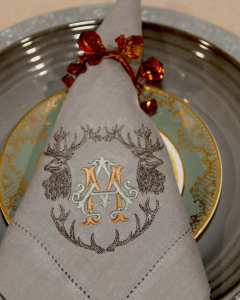
Since then, everything changed and they really became mainstream. It became more of a trend than a status symbol, simply because of its practicality. Today, we see big iconic brands using them as logos.
We are thinking especially of Chanel, Louis Vuitton, Michael Kors, etc...
This aside, the commercial, monograms are found today mainly in tailored suits, on tailored shirts, and on the back of the better watches.
The different variants in design depend on personal taste.
Raphaël van den Poel, former fashion consultant of Scapa, Reinhard Frans and Atelier NA tailored suits,
writes our weekly blog on gentleman matters. He works for MYX Magazine, a Flemish luxury lifestyle platform.
He also has his own blog which you can read here: http://belgiandandy.blogspot.com
Where does the famous Panama hat originate from?
There are many stories floating around the internet. Most of them are wrong, so we would like to tell the official story here.
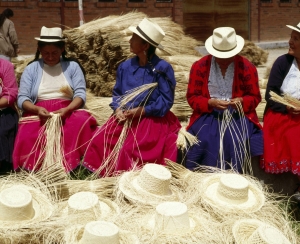
When the Conquistadores arrived in the present provinces of Manabí and Guayas on the Ecuadorian coast in the middle of the 16th century, they noticed that the natives wore straw hats that covered their ears and necks. The hats looked like toques, like those used by nuns or widows in Europe at the time. That is why they called them Toquillas (little toques). The straw used to make the hats was called "Paja Toquilla".
The basic material for making the famous Panama hats is the palm leaf "Cardulovica Palmata "which is also known by the name of "Paja Toquilla". The plant is cultivated mainly in the mountainous parts of the Costa (coast) and of the Amazon region of Ecuador (Oriente), in the provinces of Manabí, Guayas, Esmeraldas and Morona Santiago.
WHICH COUNTRY MAKES PANAMA HATS?
Authentic Panama hats are made in Ecuador. Several countries now make what they call Panama hats, but Ecuador was the very first. The coastal provinces of Guayas and Manabi began weaving the straw hats in 1630, and the true origins of Panama hats can be traced back to a town called Montecristi (of the Manabi region). At that time, they were usually called "jipijapa", "toquilla" or "montecristi" hats (the last two phrases are still used). Despite the origin of Panama hats, the term "Panama hat" did not come into use until much later.
So the next time someone asks "what country makes Panama hats", or "where do Panama hats come from", tell them that authentic Panama hats only come from Ecuador.
At the time, there were plenty of reasons for foreigners to mistakenly conclude that the hats came from Panama rather than Ecuador. Many Americans passed through Panama to get to California during the Gold Rush of the mid-19th century. So it was in Panama that they first encountered the wonderfully lightweight and stylish straw hats that would help them on their journey to prosperity. This false assumption of the origin of Panama hats would only be reinforced many years later after Theodore Roosevelt was photographed many times wearing the attractive straw hat while inspecting the Panama Canal.
According to legend, the native hat got its name when Teddy Roosevelt took part in the inauguration of the Panama Canal (1913). As a present he received an Ecuadorian straw hat, and without knowing its true origin, he gave thanks for the so-called Hat from Panama.
Perhaps the most definitive moment in the history of the Panama hat took place when Panama hats were exhibited at the World Fair 1855 in Paris. At the time, nobody was sure which country made Panama hats, so this event would have been the perfect opportunity to clear up the misconception once and for all. However, the country of Ecuador was not mentioned anywhere in the World Expo catalogue, so people were left wondering which country makes Panama hats after all.
By the time people started to realise that the hats were made in Ecuador rather than Panama, it was too late and the name was already too well-known to change.
None of this would have been possible without Manuel Alfaro, a man who in many ways can be considered the grandfather of Panama hat history. This Spanish entrepreneur arrived in Montecristi in 1835 to make his name and fortune in Panama hat history, where his streamlined manufacturing process, combined with the activities of the Gold Rush boom, ushered in a new era of prosperity.
Soon, the demand for Panama hats spread beyond visiting gold miners. The Ecuadorian port of Guayaquil helped facilitate the Panama hat industry in the 19th century. Ecuador also established its first railway system in 1850, further stimulating trade.
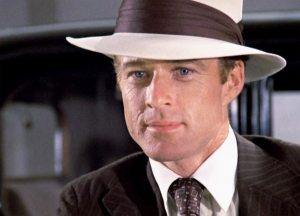
Once the people of Paris fell in love with this unique Ecuadorian headgear at the World's Fair, London, Rome and other countries soon followed suit. The rare and precious toquilla straw from Ecuador used to make the hats was only popularised in the 18th century when it was catalogued by two Spanish botanists for King Charles the IV. Until then, it had been something of a local Ecuadorian secret. Ecuador eventually allowed trade in toquilla straw with Peru and Colombia, although these countries could not compete with Ecuador's sophisticated handicraft techniques.
THE LEGACY OF ALFARO
At the age of 21, Eloy, the son of Manuel Alfaro, travelled to Panama to take over his father's hat business. His excellent sensibilities and growing reputation would one day make him the leader of Ecuador and also lead the Liberal Revolution of 1895. He led the country to a remarkable social and economic transformation that would not have been possible without the wealth. acquired through the origins of Panama hats.
When Eloy came to power, as President of Ecuador, a new legacy came to the history of the Panama hat. Panama hats became the Ecuadorian fashion accessory of independence and newly celebrated nationalism. New railways spread the hat industry even further as the stylish hats gained momentum.
From the middle of the nineteenth century, the production of hats made from toquilla straw reached its peak. Meanwhile, in the Central American country of Panama, about a thousand kilometres north of Ecuador, the construction of a canal that was to form a link between the Atlantic and Pacific Oceans began. The conditions under which the workers had to work digging the Panama Canal were tough. It was hot and humid and the sun shone brightly all day. Hats were therefore indispensable for the American workers, who wore en masse the locally available but Ecuadorian imported hats made of toquilla straw. When they returned to the US, they took the hats with them. The name "Panama hat" was born.
The name and the product became known worldwide when celebrities started wearing the hats.
US President Theodore Roosevelt wore a Panama hat during his visit to the Panama Canal works in 1906.
A photo of him even appeared in the New York Times and subsequently went global.Panama hats continued to receive worldwide press and admiration throughout the turn of the century.
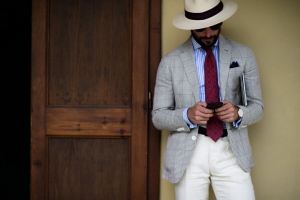
Just look at these famous Panama hat wearers from that time:
- Theodore "Teddy" Roosevelt
- Orson Welles
- Humphrey Bogart
- Gary Cooper
- Galo Plaza (Ecuadorian President from 1948-1952)
Soon other countries made Panama hats from wood, wheat and even palm trees, although their Ecuadorian counterparts continued to reign supreme, especially throughout Europe (the United States, on the other hand, did not seem to mind wearing the cheaper versions. This rule has since changed in modern times). North America was also very interested in the manufacture of these hats.

The Panamanian trend continued to rise to new heights as designer shops in the United States competed for the most exclusive Panama hats (often referred to as "finos"). Mexico, Brazil and Cuba soon jumped into the fashion fray. By 1944, the hats had become Ecuador's biggest exporter and even beat their lucrative banana trade. The most beautiful panama hat ever woven has an estimated value of $ 100,000!
In 2008, B. Brent Black ordered the most beautiful Montecristi hat ever woven, also known as "The Hat". It took master weaver Simon Espinal, who lives in the village of Pile in the Montecristi canton in Ecuador, five months to weave it, and another four weeks for five more artisans to contribute their part to finish it.
A panama hat is also special: on 6 December 2012, the art of weaving panama hats was recognised by UNESCO as an intangible cultural heritage.
Thierry Stravers is co-owner of Masonic Store.
He likes to combine his passion for style and elegance with his Masonic activities.
Thierry is the owner of Trenicaa marketing agency and is a board member of Loge Enlightenment No.313 O: Hoofddorp.
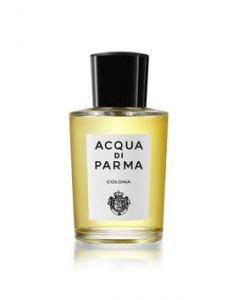
The sophisticated alchemy, which was immediately successful and became an evergreen classic, still offers sensations of incomparable freshness and radiance. Pure joy of life released by the sunny essences of the best Sicilian citrus fruits and a harmonious blend of lavender, rosemary, verbena and damask rose. This is followed by warm woody notes such as vetiver, sandalwood and patchouli. Inimitable accords capable of seduction, oblivious of time and fashion.
The Colonia formula has remained unchanged for almost one hundred years.
The elegant Art Deco bottle, with its distinctive Bakelite stopper, has been an undisputed style icon since 1930. The exquisite craftsmanship is reflected in every detail of the packaging, entirely handmade and marked by the coat of arms of the Duchy of Parma and the yellow that has adorned the city's elegant buildings for decades.
A timeless classic.
The founder, Baron Carlo Magnani.
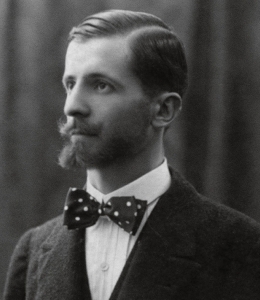
This adventurous gentleman from a distinguished family in Parma searched for a perfume that would suit his modern and sophisticated lifestyle. Paris, London, New York. However, what he could not find was the one perfume that would complete the overall picture of his refined personal style. Back home in Parma, Magnani delved into the matter and defined the character of his ultimate perfume. He knew it had to be modern and fresh, and with a detailed description he approached a Master Perfumer. In 1916, he decided to create his own cologne, which resulted in the classic Colonia, the very first Acqua di Parma fragrance. From all those travels, he drew inspiration for exclusive fragrances. Lavender, damask rose, lemon, bergamot, orange, but for this first fragrance, the founder of Acqua Di Parma was mainly inspired by his homeland, Italy and the burning sun.
Moreover, all the brand's products are produced in this country by craftsmen who work with the very best materials. Simplicity, elegance, craftsmanship, all these adjectives form the identity of the brand, which reveals its many facets in each of its fragrances.
Meanwhile, Magnani himself drew the strikingly modern flacon and devised the distinctive yellow packaging. The company's logo is the coat of arms of Marie Louise, Duchess of Parmawho reigned from 1816-1847. This is a tribute to her reign and the help she gave to develop Parma's perfume and glass industries.
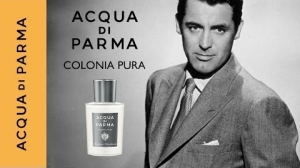
They sprinkled this cologne on the fabric of the suit. Thus was born the image of Colonia as the ultimate accessory, closely linked to the Italian tradition of elegance and tailoring.
At the time, most commercial perfumes were much stronger and heavier in composition; thus, the unusually light and refreshing fragrance from Parma found great success in Europe.
In the 1930s, the growing popularity of cologne led to an increase in its production and the development of its distribution. The 1930s and 1950s are described as a "golden age" for Acqua di Parma Colonia, which became very successful among members of high society, with a clientele of celebrities.
In the 1950s, Hollywood was enchanted by the style of Italian gentlemen. Many American stars wanted a taste of the Italian Dolce Vita and travelled to Europe more than once to visit this country that captured their imagination. Thanks to these prominent Hollywood actors who were flown in by the great Italian film-makers, they came to love and admire the Italian style they saw in grooming products and barber shops. In between filming, the stars took the opportunity to measure themselves for an authentic Italian tailor-made suit in the chic clothes shops and in the process they got to know Colonia.
Carlo Magnani smelled his chance and created a timeless aroma that not only captured American hearts, but, like a shock wave, conquered and enchanted the whole world. With Acqua di Parma, he did more than produce attractive fragrances; he enabled men to immerse themselves in the Italian lifestyle, to feel like a true gentleman.
When the family business was taken over in 1993 by 3 entrepreneurs When the family business was taken over in 1993 by people from the Italian luxury industry, a new era began.
Acqua di Parma was given a second youth and a new look, among other things by expanding the perfume line with incense, candles, household linen and leather accessories.
In 1998, the first Acqua di Parma shop was opened in Milan. It was located in close proximity to a number of boutiques of big names in haute couture and pret-a-porter, including Gucci, Prada and Versace. Today, Acqua di Parma's headquarters are still in Milan. Over the years, the brand has expanded its product range with the introduction of a home collection including bathrobes and towels and leather goods.
2016 - 100 years old

A hundred years of knowledge and understanding of quality of the highest level. One hundred years of rigorous Italian craftsmanship in which Acqua di Parma has always applied the most meticulous manual production techniques. Each of its products is manufactured in individually selected Italian ateliers where the secrets of the trade are passed from generation to generation. Each item is made with patience, time and dedication according to the spirit of the oldest master craftsmanship, using only the most precious materials. Rare essential oils, the purest waxes, woods and precious metals, beautifully tactile and visually appealing leather, quality fabrics.
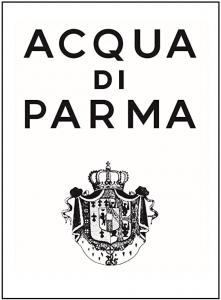
In collaboration with the luxury Italian jeweller Damiani a limited edition bottle of Colonia is launched.
Exclusively for the English department store Harrods, the Centenary Edition Colonia was produced, limited to just 100 numbered pieces, one for each year of Acqua di Parma's fascinating history. The distinctive woody fragrance is presented in an elegant Art Deco bottle, wrapped in a sterling silver casing designed by Damiani and crafted by skilled Italian jewellers.
Finished with delicate embellishments and refined relief details, this distinctive souvenir piece is sure to be cherished for years to come.
One such unique bottle was sold for £750, the equivalent of over €875.
Thierry Stravers is co-owner of Masonic Store.
He likes to combine his passion for style and elegance with his Masonic activities.
Thierry is the owner of Trenicaa marketing agency and is a board member of Loge Enlightenment No.313 O: Hoofddorp.
Etiquette rules. I have not the slightest doubt that you know these 'rules' or the 'roots' that go with them, but a little background information is always nice.
On the contrary, you, my readers here, who I know to hold even these basics in high esteem. The how and why, I try to make clear.
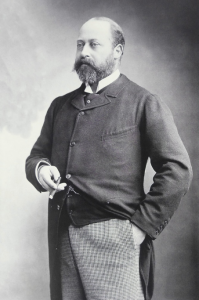
Origin:
When the new men's fashion reached the British royal family shortly after 1900, a problem arose. For the king was too fat. King Edward VII (still Prince of Wales in the early 1900s) was a real bon vivant.
He ate every day, hold on: a hearty breakfast; full lunch; tea with sandwiches and scones; dinner of twelve courses and a late supper. And on top of that, His Highness smoked 12 enormous cigars and 20 cigarettes a day.
Of course, to keep the digestion going. That is why he did not fit well in his jacket. It squeezed around his belly, and not just when he was sitting down. Edward decided to leave the bottom button of his waistcoat open. That way he could comfortably keep up with the fashion of the moment.
The High Society was often on horseback. When fashion changed and the jacket became part of the costume, King Edward thought that one thing should be kept from the old look. The jacket had to fall open at the bottom, as if you could get on a horse with it. That is why the king always left the bottom button open. So that open bottom button is an homage to the riding jacket. Edward undid the top button because it looked careless and nonchalant.
The High Society followed the king. Out of respect and perhaps also because it was more comfortable. This had a global impact. For the British Empire was at that time the largest empire of all time with a population of over 450 million people.
So what about today?
Well, this old habit has become a standard vestimentary rule. Not only at the level of etiquette, but also in contemporary fashion.
And, very importantly, we admit it, it is also much more comfortable.
Keeping the door open.
Origin:
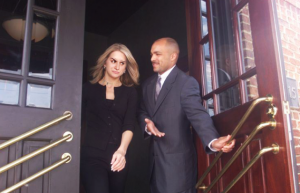
It was also a question of not making the people behind wait too long. Since these were ladies of standing, this custom soon became associated with the upper class, and thus with well-bred gentlemen. It soon became synonymous with well-bredness. And now, long after the times of hooped skirts and corsets, it is simply seen as a sign of politeness and 'decorum'.
So what about today?
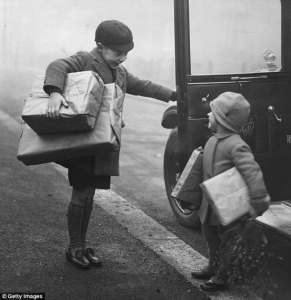
I suppose she thinks so herself. For which she has every respect, although she could have made it clear in another way. However, I experienced it as a pitiful expression of a ridiculous urge to confirm.
After all, it is better to regard it, not as an outdated custom, but as a non-gender-laden gesture of courtesy. Not just towards women or the elderly, but towards everyone. Just a courteous gesture to everyone. In case it is not appreciated by the other party, too bad for them, just smile and go on with your day. In 9 out of 10 cases, the gesture will be appreciated.
This gesture is also valid for opening the door of a carriage, car or automobile.
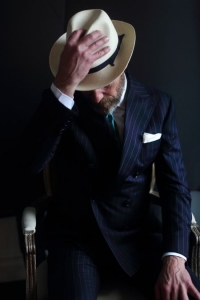
Origin:
In earlier days, men wore hats, other types of headdress and armour to protect themselves not only from the natural elements, but also from (potential) enemies. This head-dress was taken off indoors as a sign of trust (we are friends), and also to ensure that outside influences, such as rain, snow, leaves etc, would not fall on other people or meals.
Headgear is also removed at medal ceremonies and when a funeral procession passes by. A hat is worn as a fashion statement, but mainly as protection for your head against the natural elements. If you do not remove your hat indoors, it may be considered offensive by the host.
Sometimes a headgear can make it difficult to see your eyes, or it can cast a shadow on them. That does not look very neat. In the past, you were always asked to remove your hoof because some people hid their weapon on their head in that hat.
What about today?
Just like in times gone by, it shows respect for the place and host or hostess where you are received. Besides, you don't need protection from 'the elements' inside someone's house!
Putting the chair in front of a lady.
Origin:
Just like opening a door for a lady, the origin is to be found in the necessary helping of a lady (of 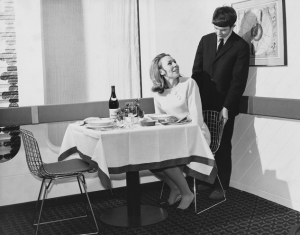
No more or less. Of course, there is also the theory that in this way, the lady could always see the entrance, and thus notice an incoming threat first.
So what about today?
And again, we have to move away from the commonly accepted that this gesture screams: 'I am only doing this because you need my help'.
The fact that you let a lady sit down first, be it your mother, sister, daughter or partner, only shows that you care about their welfare and comfort.
You give it priority over your own, which is a form of respect. It also gives you the opportunity to give your 'date' the best view.
Raphaël van den Poel, former fashion consultant of Scapa, Reinhard Frans and Atelier NA tailored suits,
writes our weekly blog on gentleman matters. He works for MYX Magazine, a Flemish luxury lifestyle platform.
He also has his own blog which you can read here: http://belgiandandy.blogspot.com
Service
Departments
- AASR Schotse Ritus
- Craft Degrees
- Cryptic
- Gentlemen
- High Degrees (Dutch)
- Knights Templar
- Knights Templar Priests
- Knights of Malta
- Le Droit Humain
- Mark Master Mason
- Order of the Secret Monitor
- Order of the Eastern Star
- Red Cross of Constantine
- Royal and Select Master
- Royal Arch
- Royal Ark Mariner
- Royal Order of Scotland
- Shriners
- The Widows Sons

